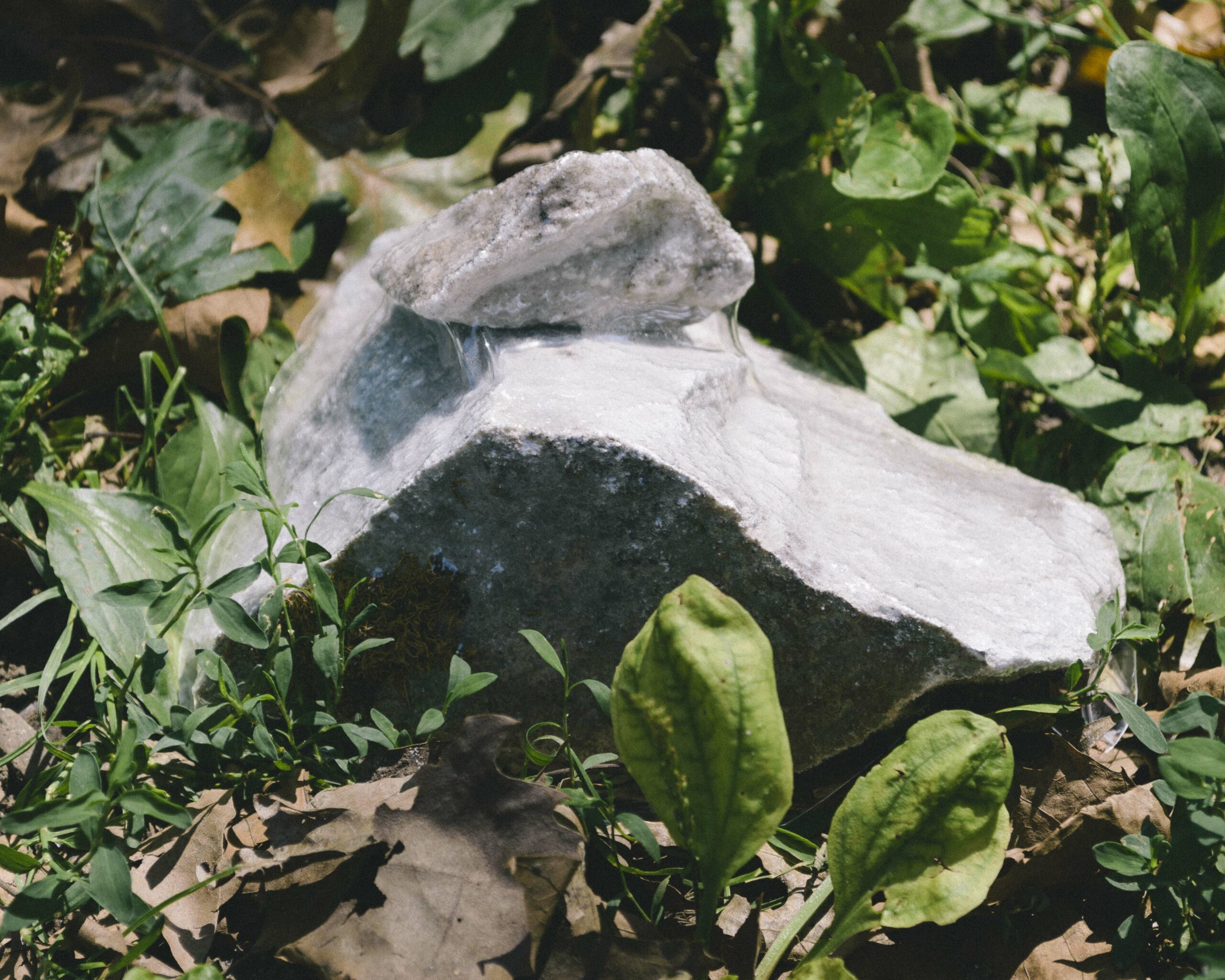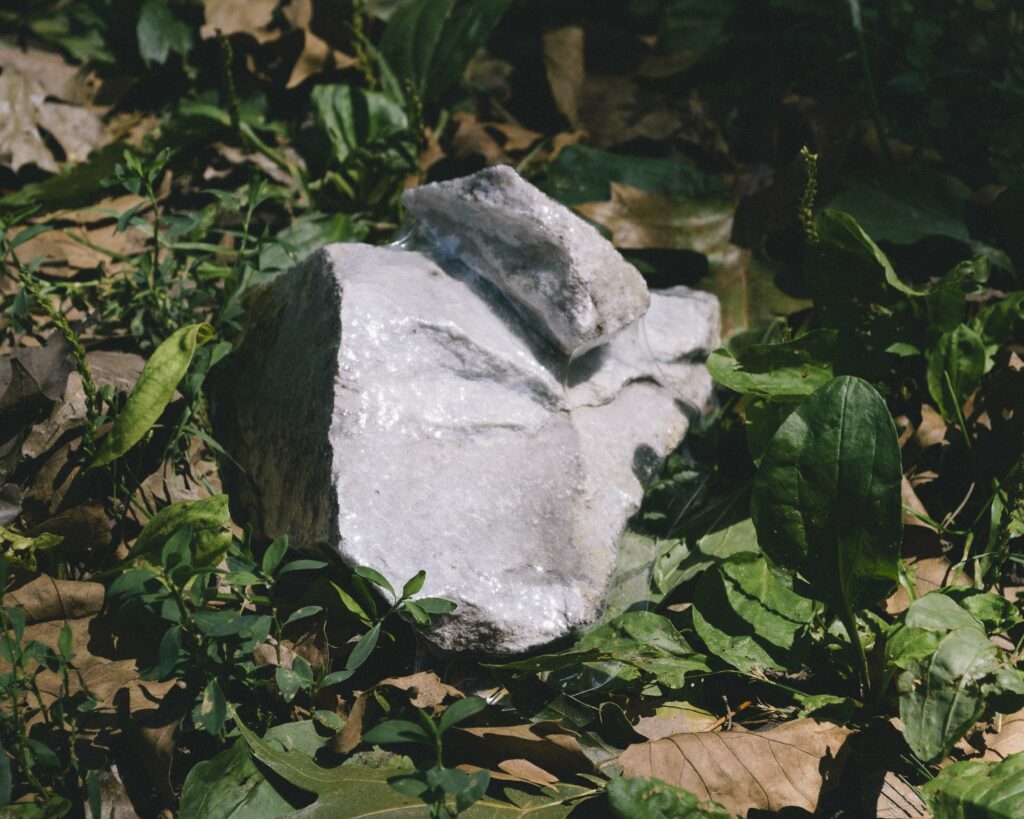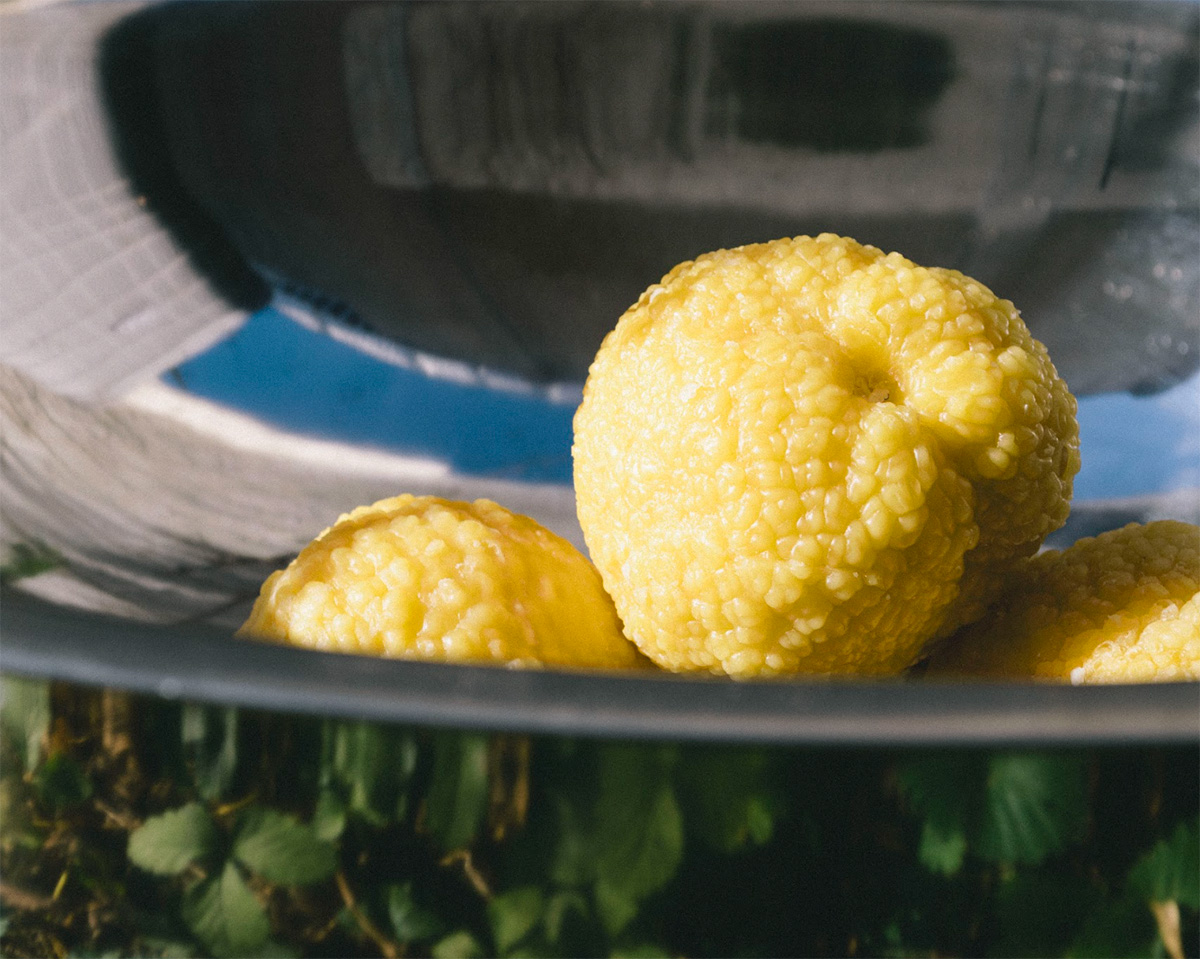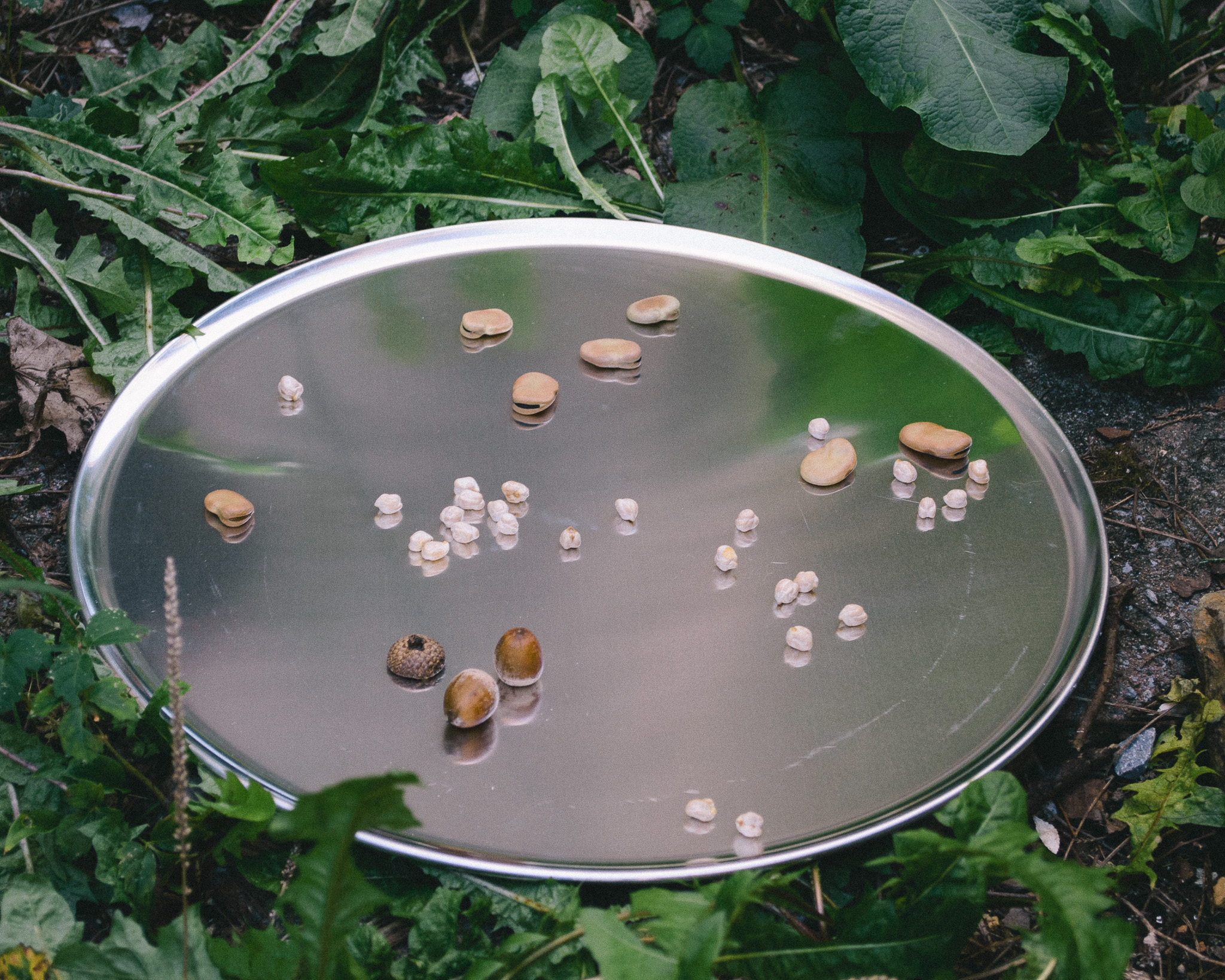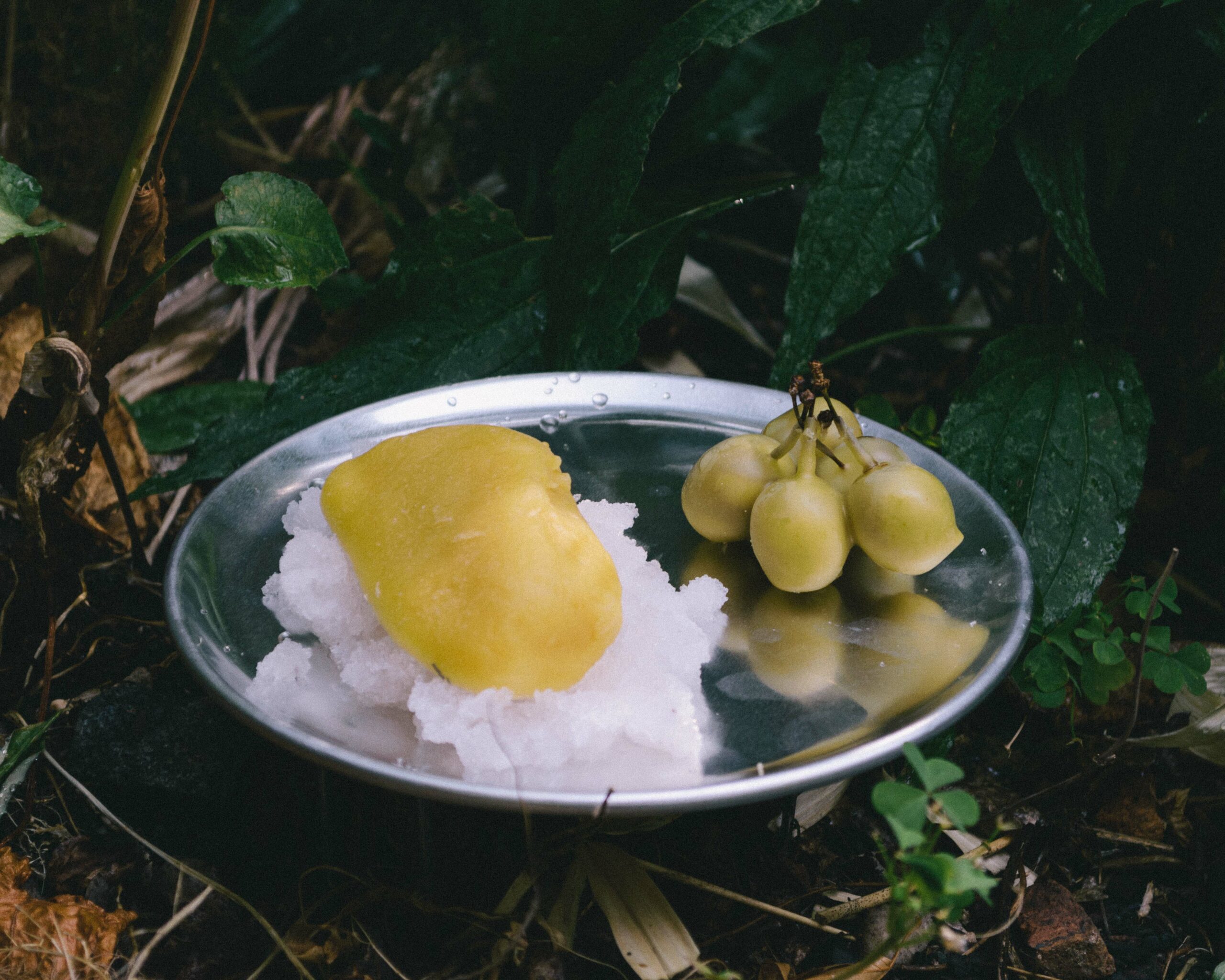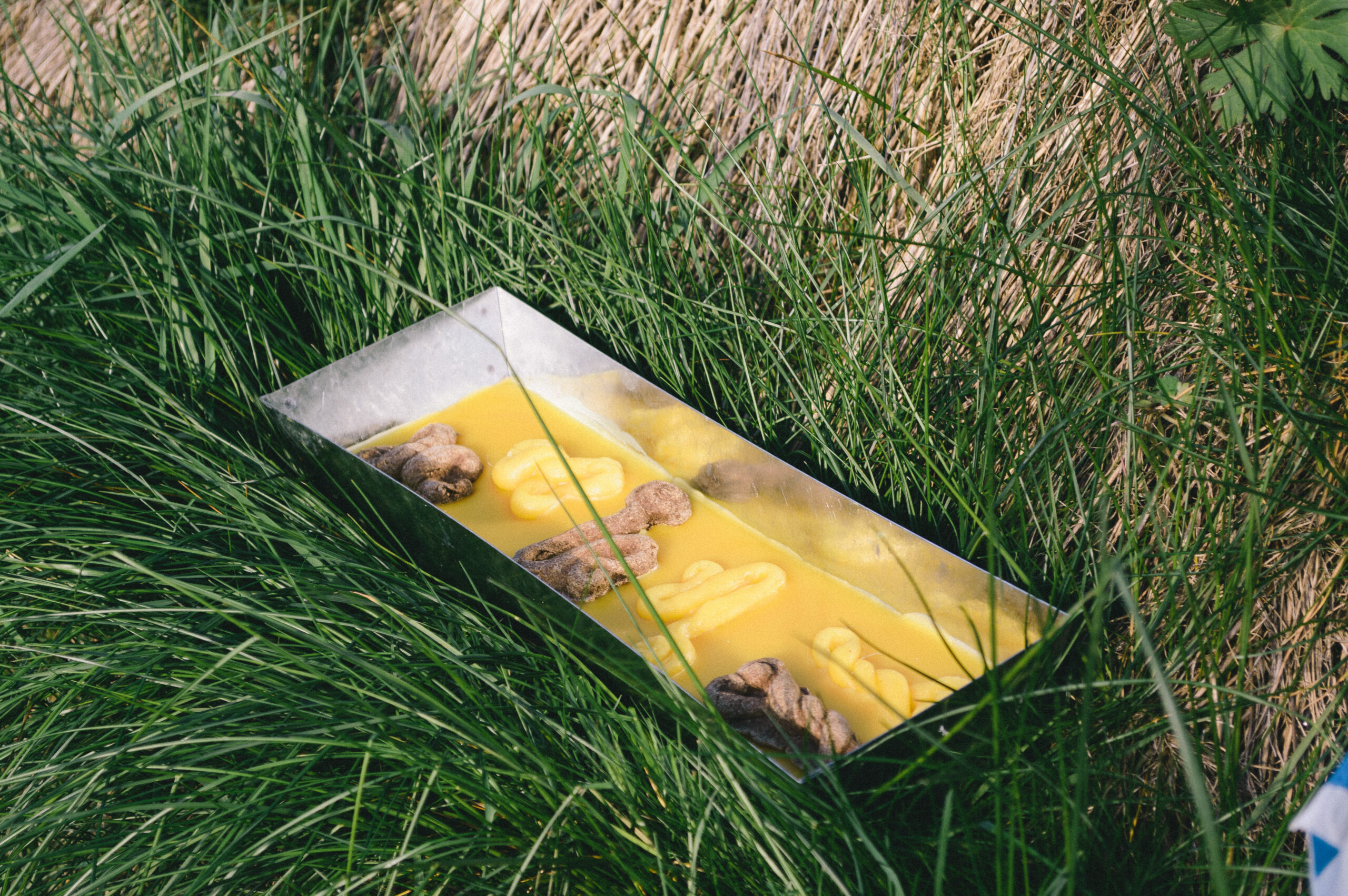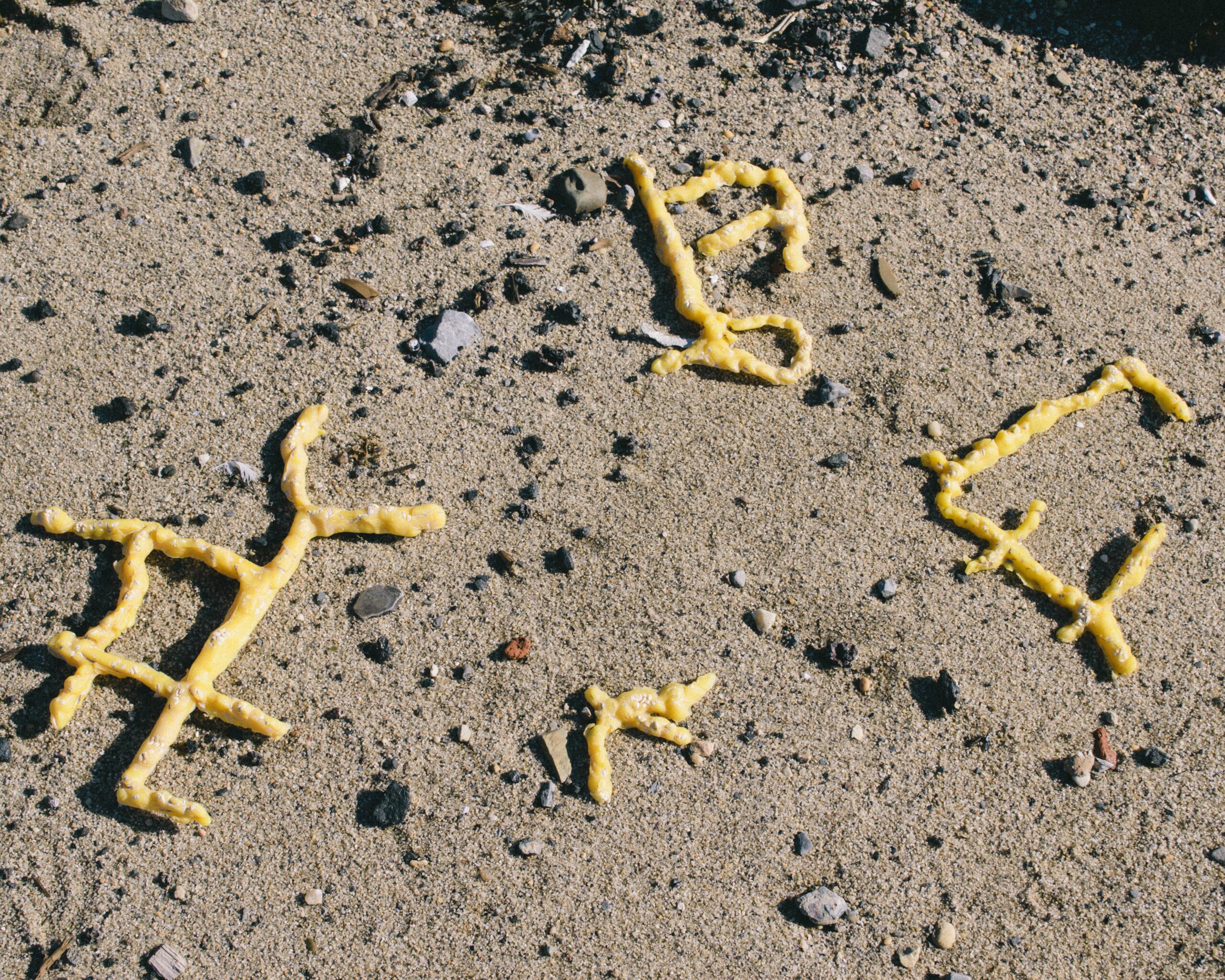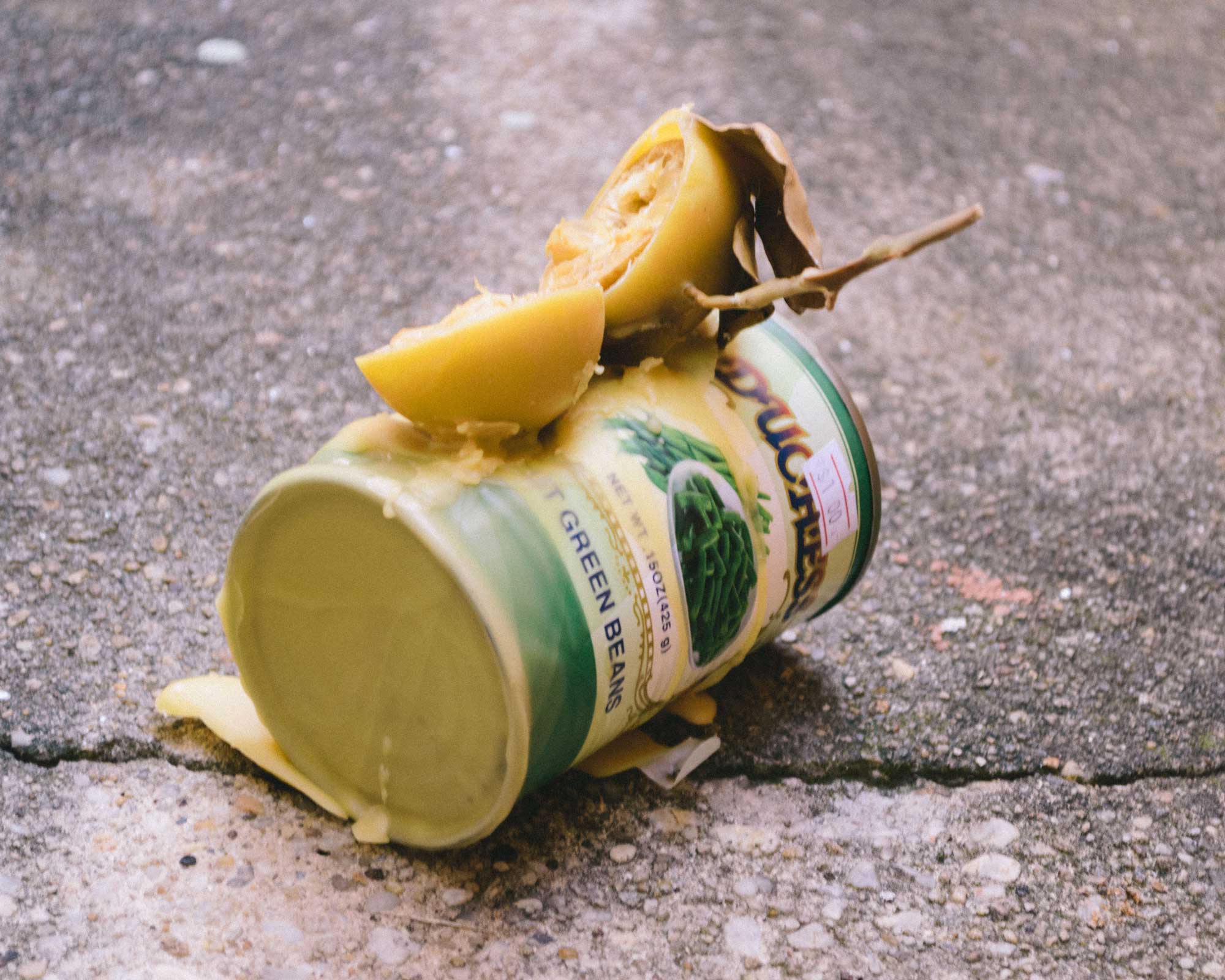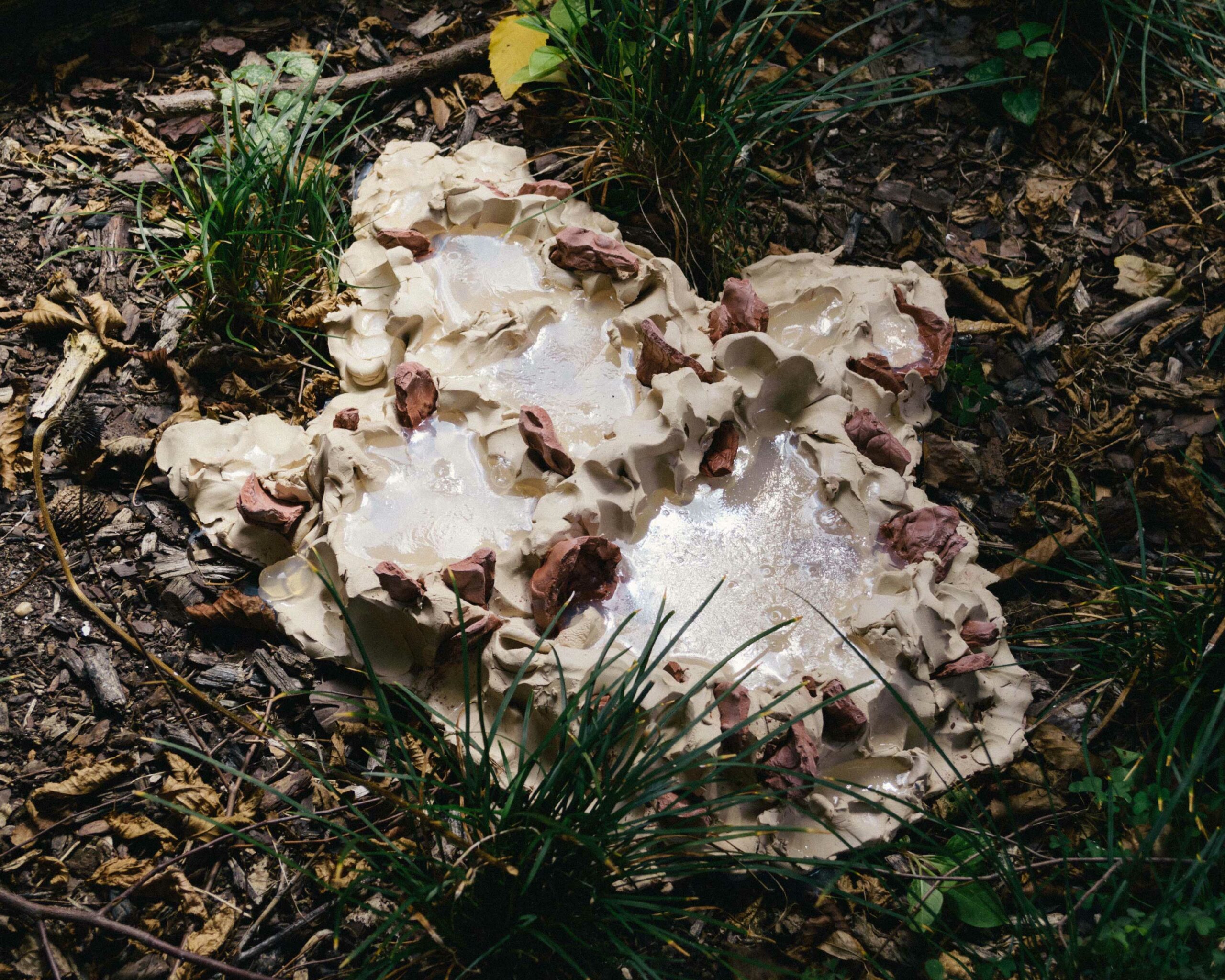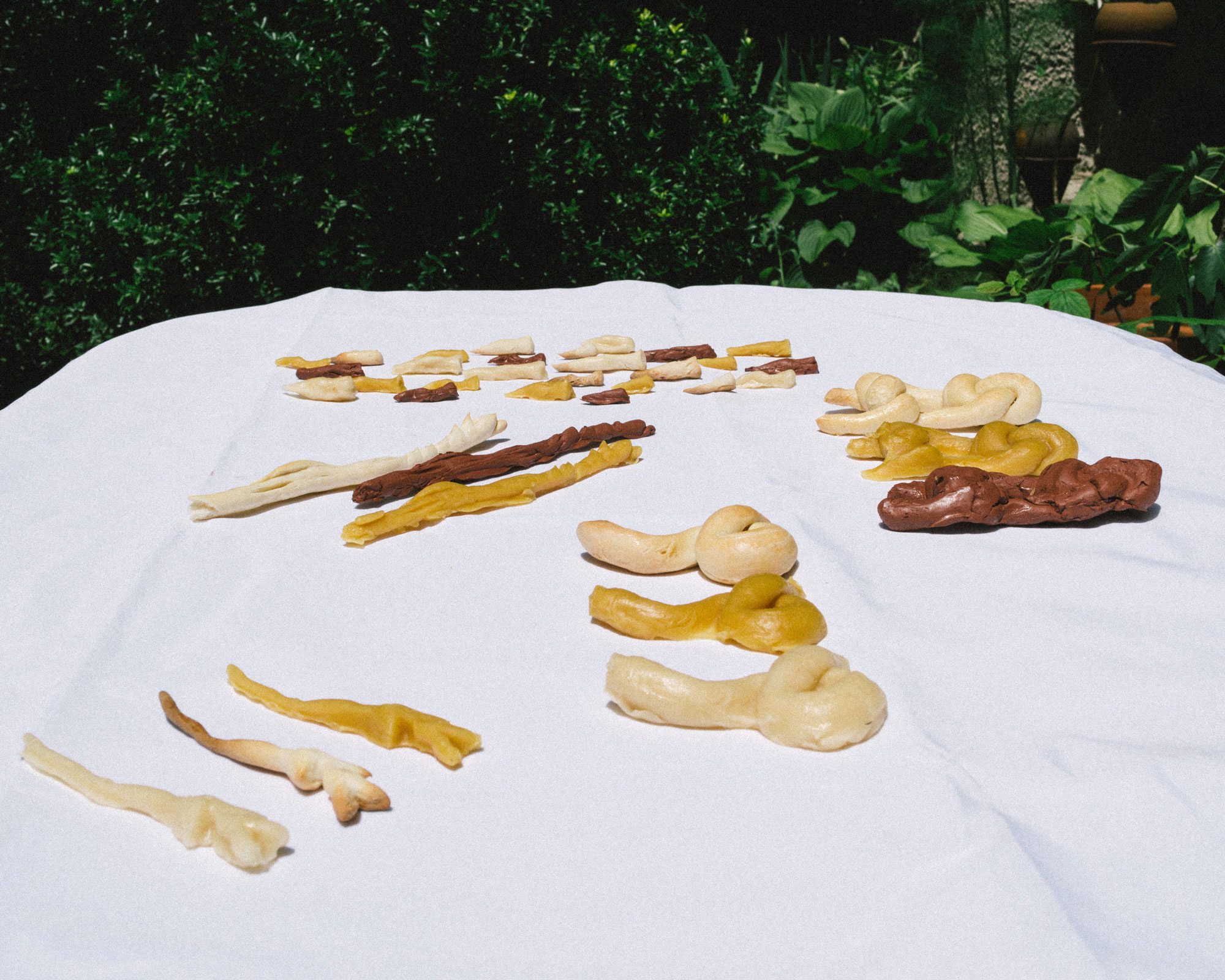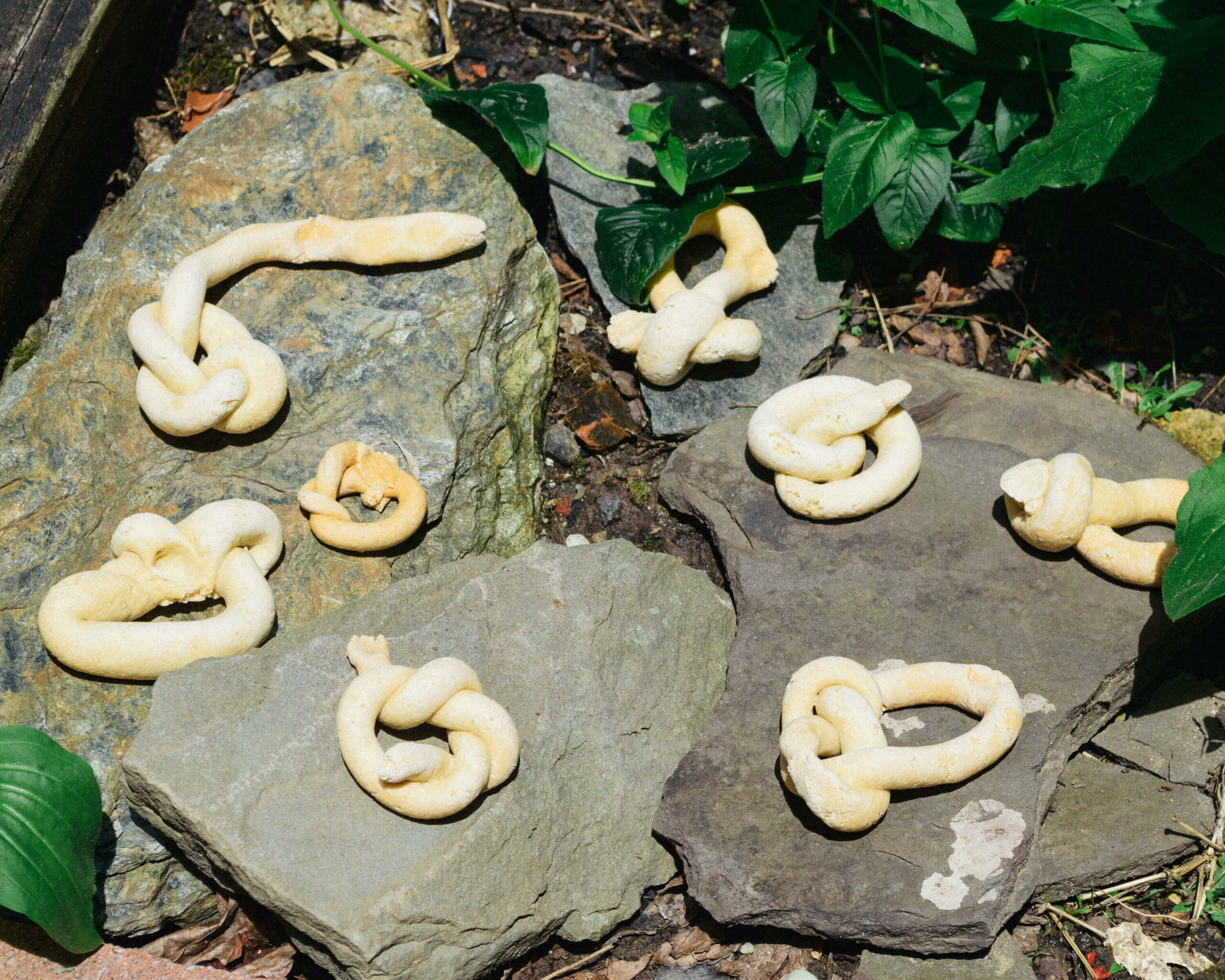Convivial Cosmogonies is a series that examines culinary labor practices and their material origins.
“This is an idea of accumulation. This is something that minimalists do not have. In the works of American artists in these last fifteen years they have voluntarily eliminated the idea of accumulation. They have chosen another kind of logic. The square eliminates completely the possibility of accumulation…”
– Jannis Kounellis, Artist’s Statement 1979
Contained within the mixing of flour and water or the stirring of a pot with a spoon is a fundamental encounter with the primordial. The basic-turned-alchemical quality of a two-ingredient dish or the use of a single tool to manipulate the physical forces of gravity and momentum are sublime in the disproportional quality of their effect in relation to the simplicity of the process itself. The line from flour and water to dough seems to lie somewhere in the action of mixing, or kneading, or perhaps the cultivation of the grains in the first place. In other words, the potential for dough is always there in its compositional parts. But, to be truly viable for nourishment, a coordinated action must take place. In the workshops I facilitate as a didactic and relational aspect of my practice, the Minimum Viable is a framework and theme I return to often to deal with questions of origins, tradition, function, and authenticity. A Minimum Viable dish or cuisine can be identified by its strategic use of available resources and profound entanglement with its surrounding material world and its corresponding limitations. Products like bread, pasta, or pickles are examples of the fruits of the Minimum Viable as it exists in relation to food and its systems of production and proliferation. In this case, the Minimum Viable means making the most from the least and asking how many is too few? How much is too little? How much is enough? What do we need to live?
Borrowed from the study of population and resource conservation1 (though more recently applied to tech and businesses as “Minimum Viable Product” coined in 2001), the Minimum Viable encompasses a number of theories and dynamics which, when applied to food systems and culture, allow us to pry the latter from the hands of individuals and corporations and observe them as societally significant and collaborative in nature. The Minimum Viable also borrows an interest in growth from the agricultural sector’s Law of the Minimum, which purports that, when several factors are involved in the development of an organism (ex: a plant), its growth is limited by the resource (ex: nutrients) with the proportionally smallest presence. Viability, or the possibility for life and its perpetuation, is of primary interest here. “Viable” describes the potential for life or growth given certain circumstances. Implicit in ‘viable’ or ‘viability’ is the idea of volatility, a latent state that, given a small change or addition, gives way to the bubbling or fermenting that indicates life. In viability is inherent tension and a sensitivity to this threshold at which life and liveliness occur.
The Minimum Viable can be understood through the lens of the continuum fallacy, which describes a difficulty in establishing an exact point (in terms of temperature or color for instance) at which a change in state occurs. In the pursuit of viability, informal or vernacular solutions almost always predate systemic ones. This is especially visible in the built worlds of architecture and design where solutions like thatched roofs or rammed earth were a product of an accumulation of knowledge rather than being developed or invented by a single individual. The adhoc, DIY, and MacGyvered solutions, though makeshift or even baroque in nature, are nevertheless solutions, and are therefore deserving of consideration and focus.The adhoc – and perhaps the Minimum Viable in general – does not discriminate or select based on simplicity of aesthetic output. Implicated in the development of human technologies for survival (shelter, nutrition, and so on), it is more interested in the efficiency of the inputs and maximizing their effects. There is then an abundance in the Minimum Viable or indeed the pursuit of abundance.
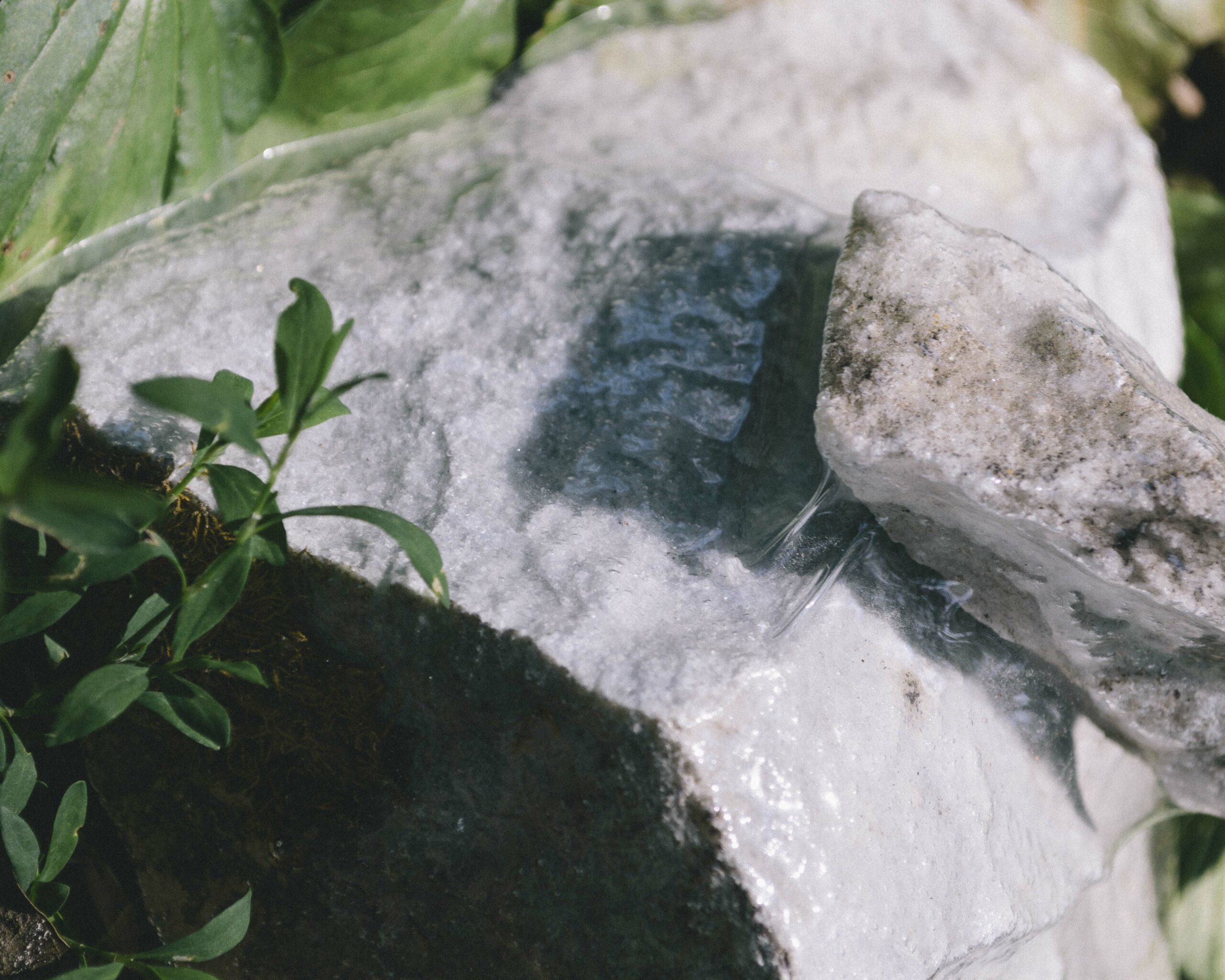

Cucina Povera or ‘Poor Cuisine’ is a category of Italian cuisine that exemplifies the Minimum Viable. It is a cuisine of necessity and categorized by process or parameters rather than the cultural specificities of a given place. Cucina Povera can come from rural and urban spaces and transcends time periods. It is a cuisine of classes which operate within highly rigid material limitations. Under the umbrella of Cucina Povera live (with equal consideration) a plate of pasta e fagioli (pasta and beans), a frittata of foraged herbs, or panzanella (a dish consisting of stale bread, tomatoes, onions, and oil). Many of these dishes are colloquially familiar because they have been lifted and appropriated to be served at an extreme markup outside of their original context at any number of fine dining restaurants. In the case of Italian food in particular, Cucina Povera is ideal for pillaging as those dishes bring with them a veneer of rootedness, authenticity, and the liveliness of Viability. This dynamic is, of course, not specific to Italian cuisine as peasant and home dishes from across the globe have become increasingly appealing to the keen chef turned “entrepreneur”. This dynamic is also present in the popularization and pop cultural prevalence of Minimalism. Here rather than earnestly engaging with strategies of survival such as frugality and the multipurpose, minimally appointed rooms or restrictive diets become fetishized signifiers. As such, this fetishization and subsequent transformation or re-presentation of foods and cuisines that are functional in origin mirrors the fetishization of the so-called Minimalist which also prefers the Minimalist object or space to exist without the burdens of relations and instead to be perceived unburdened by the weight of material context.
“Minimalism” as a term is a fundamentally American artistic export that was popularized in reference to postwar Minimalist art in the United States. Minimalism can be defined by the removal or disappearance of the frame (physical and theoretical) per Tony Smith’s famous drive down the Jersey Turnpike (Artforum, 1966). Preceding capital-M Minimalism is another M-word: Modernism. Indeed, the two are often conflated in the popular imagination to be all but completely interchangeable. From an art historical perspective, Minimalism fundamentally occupies a liminal period between Modernism and Postmodernism. As a category, Minimalism consists (or consisted depending on who you ask) of artists interested in the radical revision of art to pursue the non-pictorial and to engage with reproduction and the associated plans as viable works themselves. Minimalism relies on scale to the point of decontextualization and immersion.
“So, with Minimalism, the potential was always there that not only would the object be caught up in the logic of commodity production, a logic that would overwhelm its specificity, but that the subject projected by Minimalism also would be reprogrammed. Which is to say that the Minimalist subject of “lived bodily experience” – unballasted by past knowledge and coalescing in the very moment of its encounter with the object – could, if pushed just a little farther, break up entirely into the utterly fragmented, postmodern subject of contemporary mass culture.” – Rosalind Krauss, The Cultural Logic of the Late Capitalist Museum
Where the Minimum Viable is more than the sum of its compositional elements, Minimalism prioritizes a pared down product that, in many cases, belies the sublimely elaborate processes by which it is constructed. There is also a conflation of Minimalism with the ‘natural’, or perhaps inevitable, which also belies a revisionist approach to history in which there was ever one (universal) true or pure thing. The naturalization of the Minimalist only serves to obfuscate the specifics of the production of the Minimalist object, whether a sculpture, a building, or a vessel.
In Marx’s discussion of commodity fetishism, the abstraction and obfuscations of the compositional labor of a good is what results in its fetishization. “Fetishization” in this case means the application of a kind of autonomy or animacy of a given commodity that transforms relations between object’s compositional labor into relations of socially ascribed value. In simpler terms, the labor that goes into the production of any thing becomes all but erased and replaced with a socially generated and theoretical idea of its value. To reveal how this plays out with food, we can simply adapt an analogy Marx puts forward by swapping flour and bread for the original example of wood and tables:
“The form of
woodflour, for instance, is altered, by makinga tablebread out of it. Yet, for all that, thetablebread continues to be that common, every-day thing,woodflour. But, so soon as it steps forth as a commodity, it is changed into something transcendent. It not only stands with its feet on the ground, but, in relation to all other commodities, it stands on its head, and evolves out of itswoodenfloury brain grotesque ideas, far more wonderful than“table-turning”baking ever was.” (Karl Marx, Capital Volume One, Part I: Commodities and Money)
Marx discusses at great length the significance of the creation of value and focuses on the points and moments of transformation in that process. These thresholds are fundamentally what constitute the process of transformation, even if we cannot pinpoint an exact moment of change or birth.
Within the framework of the Minimum Viable, thresholds take on a degree of importance even if the specific threshold itself can’t be identified with pinpoint accuracy. This necessarily leads us to consider origins with origins being a threshold with a special glimmer with an assumed moment of birth, invention, or coalescence. Origins of foods take on this glimmer and are the object of common fascination, namely, questions like “Who invented this?” “When did the first person decide this was edible?” and so on. These questions assume a couple things: first, that the subject ( eater, cook) is a single human, and second, that there is an exact moment where these discoveries or inventions took place. In reality, these developments take place over time and are accumulated, learned, and taught rather than invented or acquired in an instant. The Minimum Viable allows us to zero in on these thresholds and origins but to simultaneously let them expand and diffuse in order to interrogate this accumulation and the dynamics that lead to certain realizations rather than searching for an individual to credit. This allows us to examine, for instance, why traditions of bread-making are globally common but the forms of the breads themselves vary widely. The conditions of their development become of interest and it also allows for those forms to change according to new and evolving conditions (in many cases: a changing climate).
The Minimum Viable is a useful framework from which to understand how existing food systems might adapt to these changing conditions. The nature of the change and conditions is perhaps less relevant than the specific status of those food systems and the extent of their degradation by extractive capitalist interests. The Minimum Viable as a way to consider efficiency in process is also ideal for navigating issues pertaining to resources and wasted. Not unlike Degrowth theories, the focus on how we labor rather than what we produce offers opportunities for a lively revision of existing systems and processes. In the case of food systems, we must question how to maintain traditions by honoring the specific material constraints that produced them rather than the relentless reproduction of the product. The product of this rooted process will necessarily be more familiar and therefore more usable. The attraction to conservation need not be one that prevents progress, instead it can allow for considered adaptations of what already exists without succumbing to nostalgia or alienation. There can therefore be a sensitivity towards the material conditions of traditions and a powerful refusal to blindly outsource (re)production (and accumulation) of them, and instead consciously share the burden of maintenance of our respective and ever-lively traditions of life-making.
⌘ SOURDOUGH STARTER ⌘
Mix 200g of a flour of your choice with 100g of water (optional: a small teaspoon of raw honey). The flour can be as local or industrial as you like and the water can be tap or bottled (if using tap, some people like to let it sit to let any chlorine dissipate but it’s not explicitly necessary). Let the mixture sit in a warm place, lightly covered but with airflow, for a day. On day two, discard half of the mixture and add 100g of flour and water. The next day there may be bubbles or not, but either way continue the process by mixing 100g of starter with 100g of water and 100g of flour two times a day for two days with roughly twelve hours between each feeding. After two days, the mixture should be bubbly and smell tangy. At this point you have starter and you can feed it once a day with a ratio of 1 part starter to 1 part flour to 1 part water. To maintain its character, feed it the same things, or to nudge it in a new direction, change its diet or take it on a trip.
